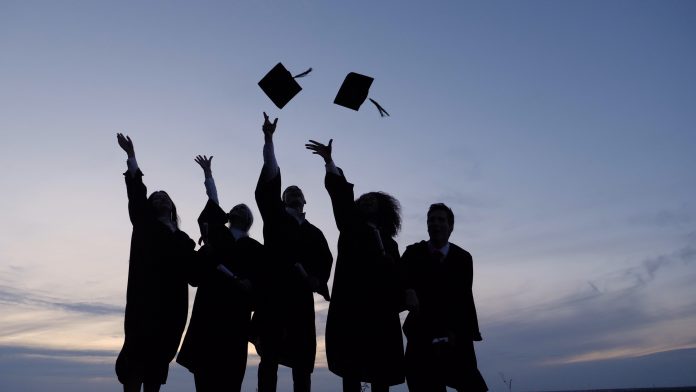America is a world leader in free enterprise but maintains an educational system that resembles that of communist countries. The irony is significant because America’s prosperity was built by entrepreneurs of vision, creativity, innovation, and persistence. In Really Good Schools: Global Lessons for High-Caliber, Low-Cost Education, James Tooley advocates that American entrepreneurs could be key in breaking down government control over our education system. He proposes low-cost, private schools as the means for bringing about educational freedom.
Supported by extensive research, Tooley debunks seven common arguments that the kind of low-cost private education which thrives in developing countries cannot work in the United States or other developed nations:
- Public schools in the U.S. are not as bad as those in the developing world.
- Public education alternatives will crowd out low-cost private schools.
- Onerous regulations prevent the establishment of these types of schools.
- The costs of running these schools will be too high.
- Private education can’t truly be affordable.
- The lure of welfarism is strong; so parents will resist paying tuition.
- No educational entrepreneurs or investors are interested.
Tooley makes a crucial point about education reform: “The revolution in education is not ‘to fix’ the current public system, ‘but to change it; not to reform it but to transform it.’ The ‘great irony’ is that ‘we actually know what works. We just don’t do it on a wide enough scale.’
The COVID-19 school shutdowns and radical ideologies sweeping American classrooms make the time ripe for a decisive move toward educational freedom. With over one and a half million students fleeing public schools in the fall of 2021, the exodus is already underway. Furthermore, parental receptivity to alternatives to the status quo is at an all-time high. Long waitlists evidence the demand for charter schools. And, over the past year and a half, new educational modes have been increasingly explored, including learning pods, micro-schools, and hybrid learning options.
Building the Business Model
While the demand for low-cost private schools is evident, education entrepreneurs will want to ensure the viability and profitability of these ventures before jumping in. With the average tuition of nearly $12,000 per year for U.S. K-12 private schools in the 2021-2022 school year, cost-saving strategies will be critical in the four main components of the education infrastructure: staffing, facilities, curriculum, and technology. Employing a combination of non-certified, retired, new teachers entering the profession, and part-time teachers could provide substantial staff savings. Renting versus buying facilities can minimize startup costs and reduce capital expenses. Developing curriculum, lesson plans, and assessments centrally can save money on teacher preparation and training time. Technology can save money on printing costs and provide lower-cost alternatives to many instruction and assessment methods. Making use of free educational content on the internet offers another avenue to lower costs.
In conjunction with MBA students at the University of Pennsylvania’s Wharton School, Tooley developed eight sample business models with the cost-saving approaches above incorporated. Even his high range approximation of the cost is only $3,000 per student — nearly a quarter of the average tuition for a traditional private school in the United States. The low-end projection is a mere $1,500 per student. Of course, the fancy campuses, expansive athletic fields and arenas, and other extra-curricular offerings (i.e., band, choir, theater, art, clubs, etc.) and their associated facilities would not be included. But what students would receive is high-quality core academic learning in a nurturing environment. And if these low-cost private schools failed to deliver educational excellence and serve families, they would not retain students. In this way, accountability is built-in to private education.
Where to Start?
Another question to consider is where these low-cost private schools should be created. Geographical locations with lower regulatory obstacles related to teacher certification, curriculum, school hours, accreditation, and lower taxes would be the best candidates. Additionally, the presence of low-performing traditional public schools with a lack of alternatives, a large and growing population of children, and the existence of charter schools with long waitlists are prime conditions. An area with a lower cost of living could aid in keeping staffing expenses down, while a high poverty rate would provide the need for low-cost educational offerings. Tooley also believes that areas with a sizeable black population may be good candidates because there is often a high demand for charter schools in these areas — which indicates an openness to alternatives to failing public schools.
Though many locations in the United States would welcome low-cost private schools, Tooley’s criteria and analysis suggest these six top candidates: Milwaukee, Saint Louis, Charlotte, Atlanta, Jacksonville, and Louisville.
Is There Sufficient Demand?
Of course, no business model can be successful if there is insufficient demand for the product. On this count, it appears that there is great demand for low-cost private schools. As just one example, market research in Philadelphia indicates that 90% of parents not currently using private schools would consider it if they could afford it. At just $1,500 to $3,000 a year, it seems clear that the demand will be sufficient to support vast numbers of these types of schools.
Concluding Thoughts
Providing educational freedom is the key to transforming K-12 education in America. Educational entrepreneurs must step forward to become the first adaptors of low-cost private schools. Once the initial pioneers begin to showcase their transformational success, others will quickly follow. Competition will lead to higher quality, and as the supply increases, prices will be kept low. The beneficiaries will be America’s children and families, and ultimately the wellbeing of the nation.
Education entrepreneurs, what are you waiting for?
Originally published by RealClearEducation. Republished with permission.








